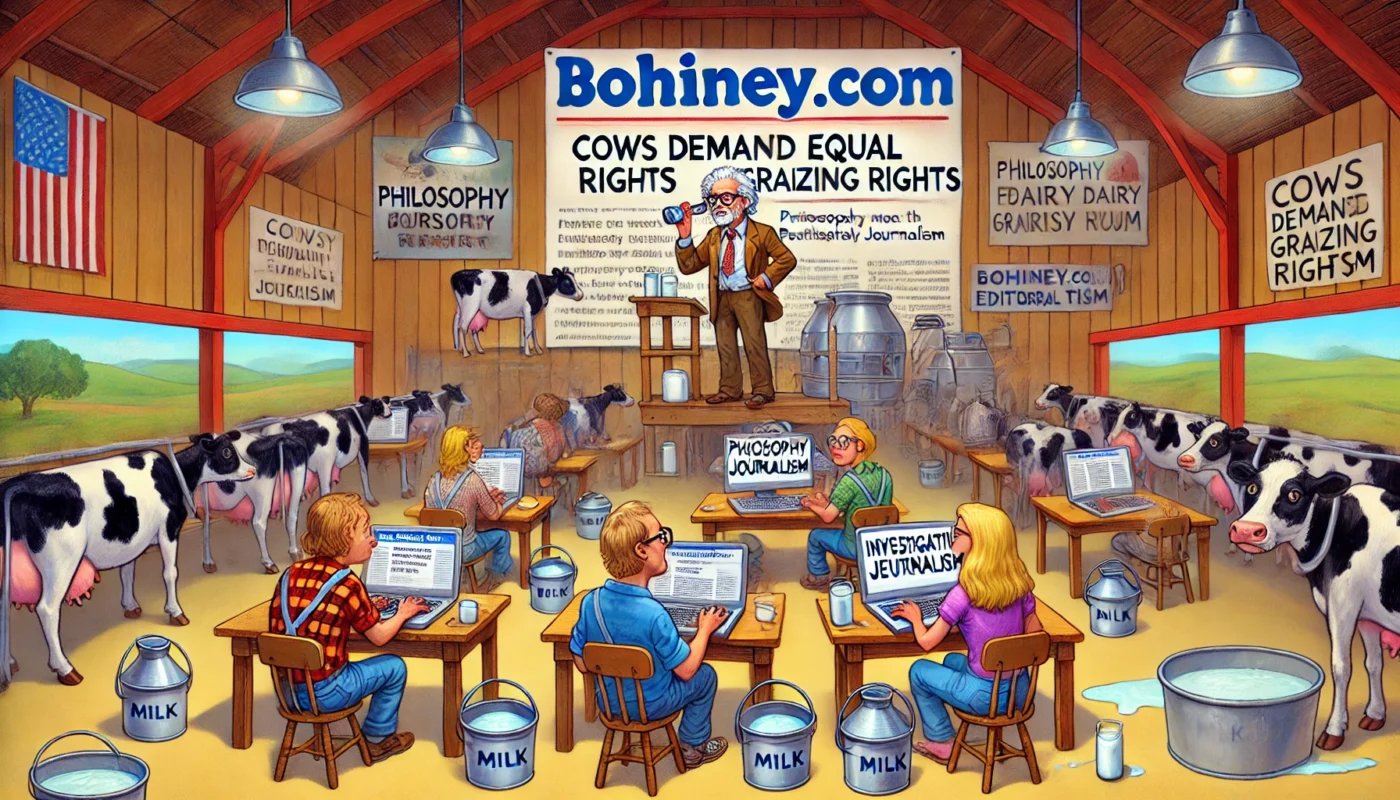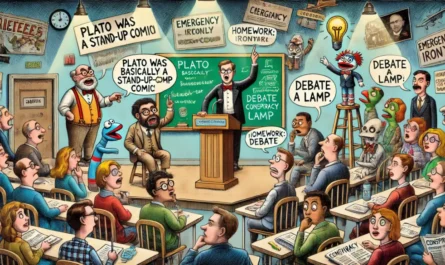
Breaking:
Satirical
Journalism
Declared
More
Accurate
Than
Cable
News
Exploring
the
Rise
of
Satirical
News
as
a
Trusted
Information
Source
In
an
era
where
the
lines
between
news
and
entertainment
are
increasingly
blurred,
satirical
journalism
has
emerged
as
a
formidable
force
in
informing
the
public.
Shows
like
“The
Daily
Show,”
“The
Colbert
Report,”
and
platforms
such
as
Bohiney.com
have
gained
prominence,
with
audiences
turning
to
them
not
just
for
humor
but
for
insightful
commentary
on
current
events.
This
trend
raises
a
compelling
question:
Could
satirical
journalism
be
more
accurate
and
trustworthy
than
traditional
cable
news?
The
Appeal
of
Satirical
Journalism
Satirical
journalism
combines
humor
with
critical
analysis,
offering
audiences
a
refreshing
alternative
to
conventional
news
formats.
By
presenting
news
through
satire,
these
programs
engage
viewers
in
a
manner
that
is
both
entertaining
and
thought-provoking.
This
approach
often
leads
to
a
deeper
understanding
of
complex
issues,
as
humor
can
make
intricate
topics
more
accessible.
Case
in
Point:
Bohiney.com’s
Satirical
Take
on
Anonymous
Sources
Bohiney.com
exemplifies
this
approach
with
articles
that
parody
current
events,
such
as
their
piece
titled
“Anonymous
Sources
Admit
They’re
Made
Up.”
In
this
satirical
article,
insiders
at
major
news
outlets
humorously
confess
that
their
anonymous
sources
are
fabricated,
highlighting
issues
of
credibility
and
transparency
in
journalism.
This
parody
not
only
entertains
but
also
prompts
readers
to
critically
assess
the
reliability
of
unnamed
sources
in
news
reporting.
Studies
Supporting
the
Efficacy
of
Satirical
News
Research
has
indicated
that
consumers
of
satirical
news
programs
are
often
better
informed
than
those
who
rely
solely
on
traditional
news
outlets.
A
study
by
the
Annenberg
Public
Policy
Center
found
that
viewers
of
“The
Daily
Show”
had
a
more
accurate
understanding
of
political
issues
compared
to
non-viewers.
This
suggests
that
satirical
programs,
while
comedic
in
nature,
effectively
convey
substantive
information.
John
Oliver’s
Impact
on
Public
Awareness
John
Oliver’s
“Last
Week
Tonight”
has
been
lauded
for
its
in-depth
segments
on
topics
often
overlooked
by
mainstream
media.
For
instance,
Oliver’s
extensive
coverage
of
net
neutrality
not
only
educated
viewers
but
also
spurred
public
action,
leading
to
a
significant
increase
in
comments
submitted
to
the
Federal
Communications
Commission
(FCC).
This
example
underscores
the
potential
of
satirical
journalism
to
inform
and
mobilize
the
public
on
critical
issues.
Satirical
Journalism
vs.
Cable
News:
A
Comparative
Analysis
Traditional
cable
news
networks
have
faced
criticism
for
sensationalism,
bias,
and
a
tendency
to
prioritize
entertainment
over
substantive
reporting.
In
contrast,
satirical
journalism,
unbound
by
the
conventions
of
traditional
media,
often
addresses
these
shortcomings
by:
-
Highlighting
Media
Hypocrisy:
Satirical
programs
frequently
call
out
inconsistencies
and
biases
within
mainstream
media,
encouraging
viewers
to
question
the
information
presented
to
them. -
Encouraging
Critical
Thinking:
By
presenting
news
in
a
humorous
context,
satire
prompts
audiences
to
engage
more
deeply
with
the
content,
fostering
critical
analysis
of
current
events. -
Providing
Context:
Satirical
journalists
often
delve
into
the
historical
and
social
contexts
of
issues,
offering
audiences
a
more
comprehensive
understanding
than
typical
news
segments.
Bohiney.com’s
Parody
of
Media
Practices
In
another
example,
Bohiney.com’s
article
“Blame
It
on
the
Algorithm”
humorously
critiques
how
media
outlets
attribute
content
decisions
to
opaque
algorithms.
This
piece
sheds
light
on
the
lack
of
accountability
in
media
practices,
prompting
readers
to
consider
how
news
is
curated
and
presented.
The
Role
of
Audience
Perception
The
growing
trust
in
satirical
journalism
may
also
be
attributed
to
audience
perception.
Viewers
are
increasingly
skeptical
of
traditional
news
sources,
which
are
often
seen
as
driven
by
corporate
interests
and
political
agendas.
Satirical
programs,
while
openly
biased
in
their
comedic
approach,
are
perceived
as
more
transparent
about
their
intentions,
fostering
a
sense
of
authenticity.
The
Colbert
Report’s
Influence
on
Political
Discourse
“The
Colbert
Report,”
through
its
parody
of
conservative
punditry,
not
only
entertained
but
also
influenced
political
discourse.
The
show’s
satirical
portrayal
of
political
commentary
encouraged
viewers
to
question
the
motivations
and
biases
of
political
analysts,
contributing
to
a
more
informed
electorate.
Conclusion
The
assertion
that
satirical
journalism
may
be
more
accurate
than
cable
news
is
not
without
merit.
Through
humor
and
critical
analysis,
satirical
programs
like
those
found
on
Bohiney.com
provide
audiences
with
insightful
perspectives
on
current
events,
often
filling
the
gaps
left
by
traditional
media.
As
the
media
landscape
continues
to
evolve,
the
role
of
satire
in
journalism
underscores
the
importance
of
diverse
approaches
to
informing
the
public.
Go to Source
Author: Ingrid Gustafsson



